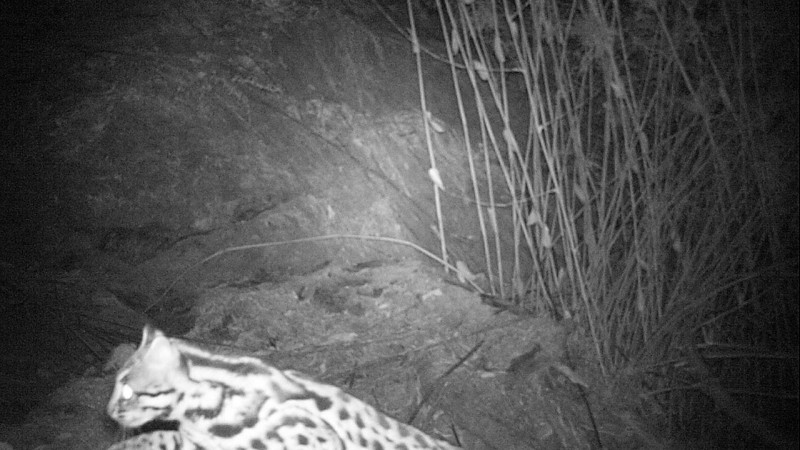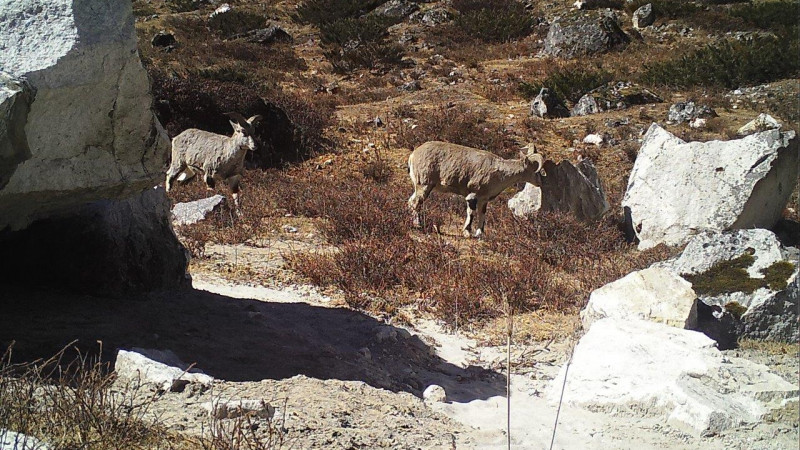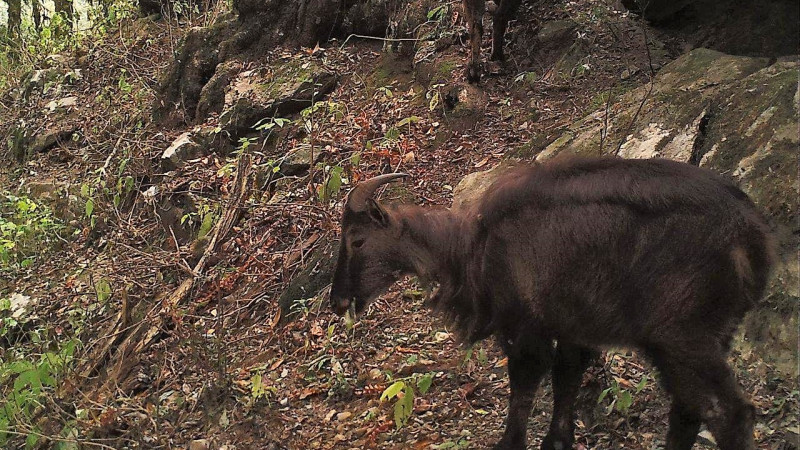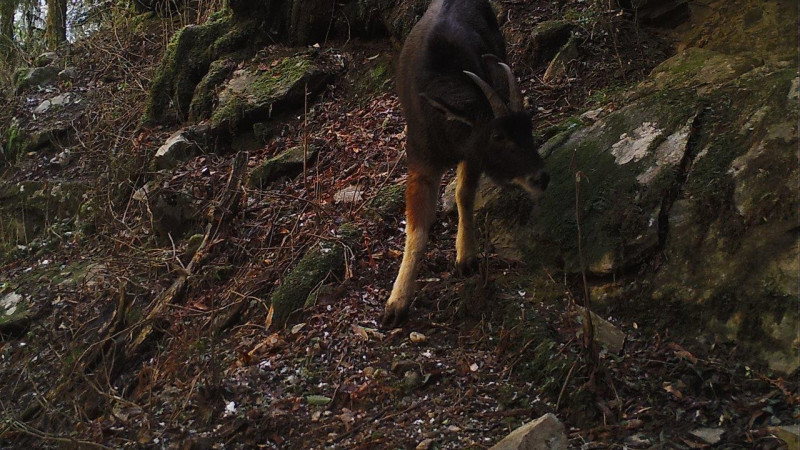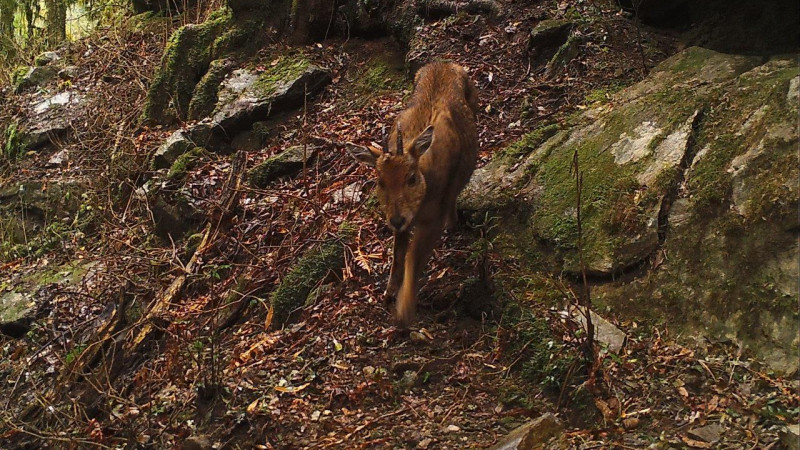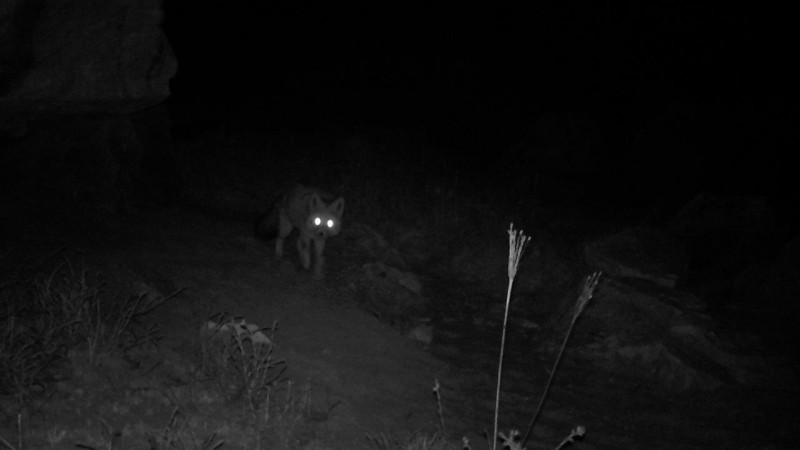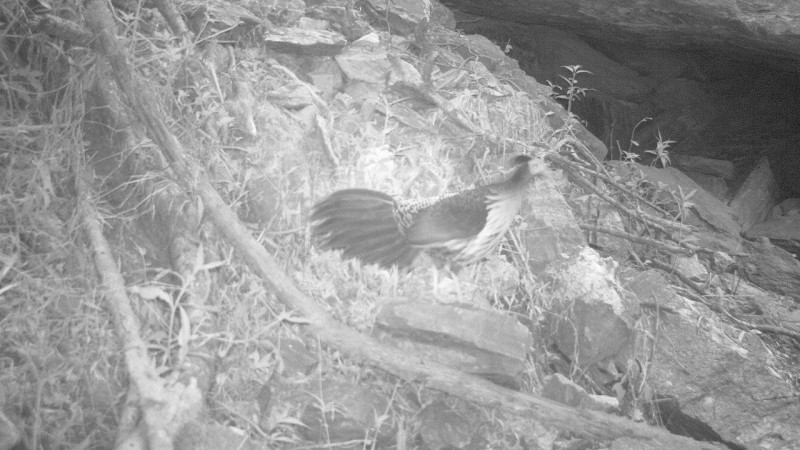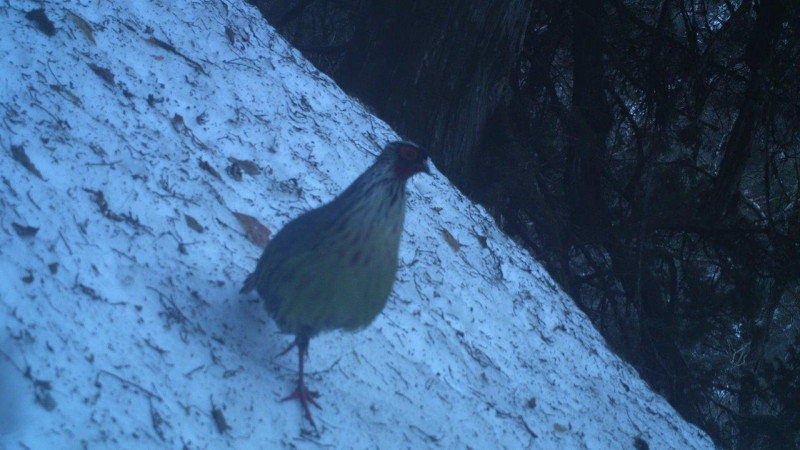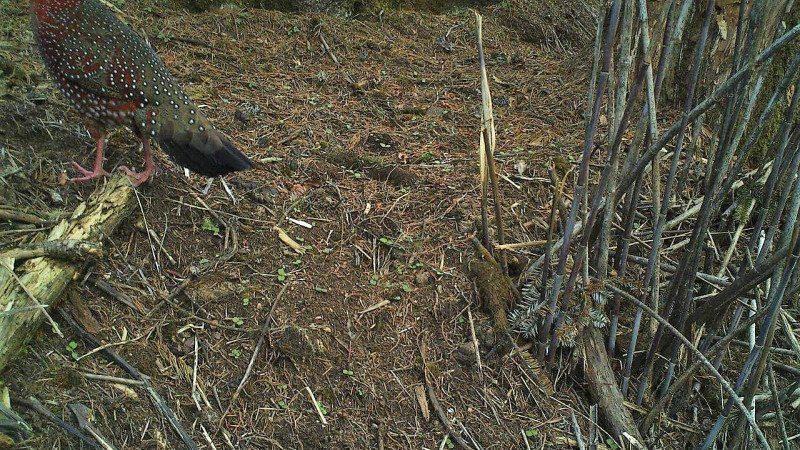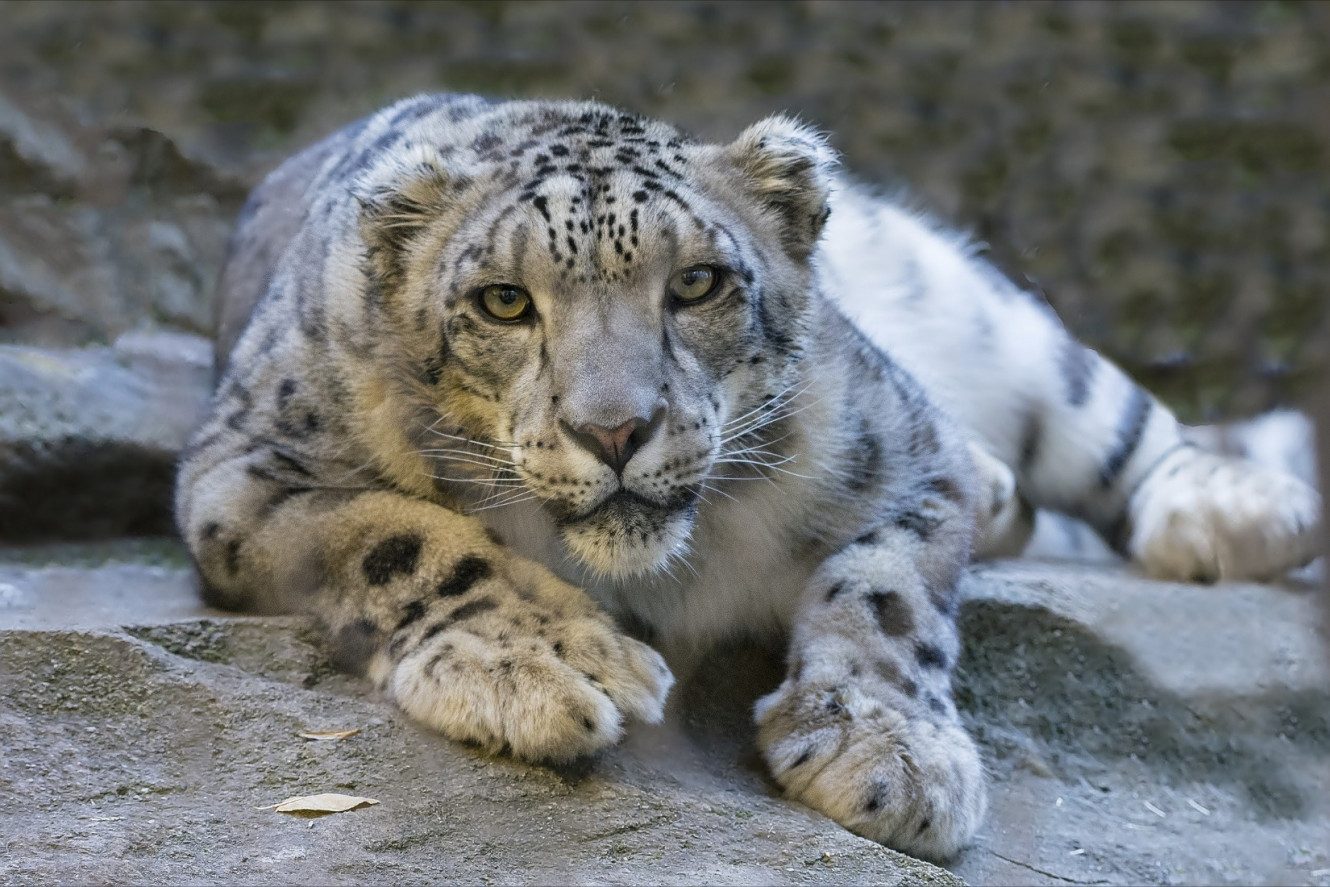
After seven months of camera trapping in Lapchi valley, NTNC-GCAP has confirmed the physical presence of the Snow leopard (Uncia uncia) for the very first time in Gaurishankar Conservation Area (GCA). Three photographic evidences of the top mountain predator have been recorded in the Rhododendron-Juniper scrubland at an elevation of 4,087 meters, five kilometers from Lapchi village.
Together with the snow leopard, the Asiatic golden cat (Catopuma temminckii) was also another of first records (photography) made from the same research. Sixteen species have been recorded in total; mammals: Leopard cat, Musk deer, Assamese monkey, Asiatic black bear, Tibetan sand fox, Red fox, Blue sheep, Himalayan serow, Himalayan goral and Yellow-throated marten; along with game birds: Himalayan monal, Satyr tragopan and Blood pheasant.
In the year 2016-17, NTNC-GCAP carried out a reconnaissance survey of Snow Leopard in Numbur Valley. Report from the survey at the time showed potential of existence of snow leopards due to presence of many prey species and suitable habitat in the area.

Between October 2018 and April 2019, a research team jointly led by Mr. Bishnu Prasad Pandey, conservation officer at NTNC-GCAP and Assistant Professor Dr. Narayan Prasad Koju, NEC-CPS, Pokhara University along with Shankar Man Thami and Bijay Bashyal installed eleven infrared cameras in Lapchi valley. Rigorously monitoring the valley on foot for possible evidence of the elusive cat and its prey base, eleven quadrates of 2 km by 2 km were overlaid for the biodiversity survey. In each quadrate, 1 camera trap was set up by selecting the most ideal spot for photo/video capturing. Places such as Gobu Khola, Kukure Raja Danda, Lumnang, Samling, Thesing, Upper Thesing of Lapchi, which attracted higher proof for wildlife were selected for camera installation within the grids. With remarkable insights from the study from Lapchi in Lamabagar, the research team has now started installing camera traps in the Rolwaling region in Gaurishankar Rural Municipality, another area harboring similar snow leopard habitat conditions. Here, for the Rolwaling valley, 12 grids of 16 square Km size are established and supplied with 12 pieces of infrared cameras. Professor Dr. Mukesh Kumar Chalise of Central Department of Zoology, TU is guiding the camera trap as consultant for Rolwaling valley.
Lapchi village is a popular destination for Buddist pilgrims. Situated at the foot of Lapchi Kang mountain range it is decorated by meditation caves of the prominent Tibetan saint and poet Jetsun Milarepa, which surrounds the main monastery of Lapchi, Chora Gephel Ling. Animal sacrifice here is strictly prohibited and serves as a remarkable value for conservation. It lies in the northern part of Bigu Rural Municipality and the valley is surrounded by China border to the east, west and north.

The latest findings of the first concrete proof of existence of the top carnivore of the Himalayas in Lapchi have intrigued many wildlife enthusiasts both at home and abroad. As protected area managers, while sustainable management of natural resources is NTNC-GCAP's primary objective, its research focus and capacity continues to be integral. Apart from the ongoing wildlife biodiversity study in Rolwaling, a team of aquatic survey expert and GCAP staffs are also in Tsho-Rolpa glacial lake in order to collect data and study its aquatic biodiversity. Besides helping to better inform natural resources and habitat management interventions in the future, strengthening the study of these rare species will be important for maintaining the areas ecological integrity. Success of the snow leopard and other wildlife will subsequently offer growth for community, livelihood and nature-based tourism opportunities.

